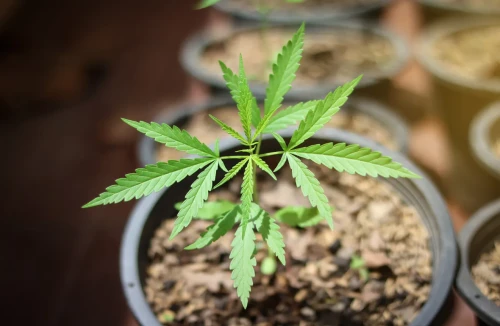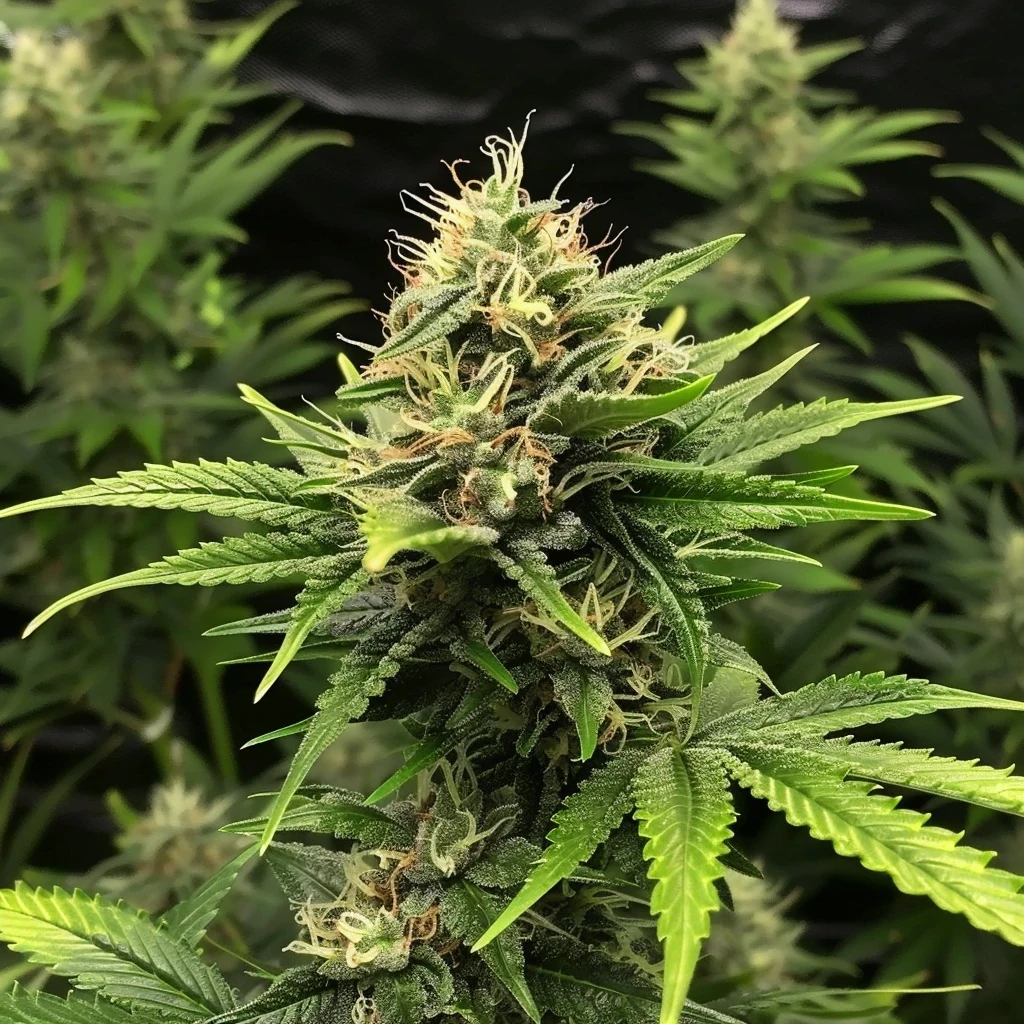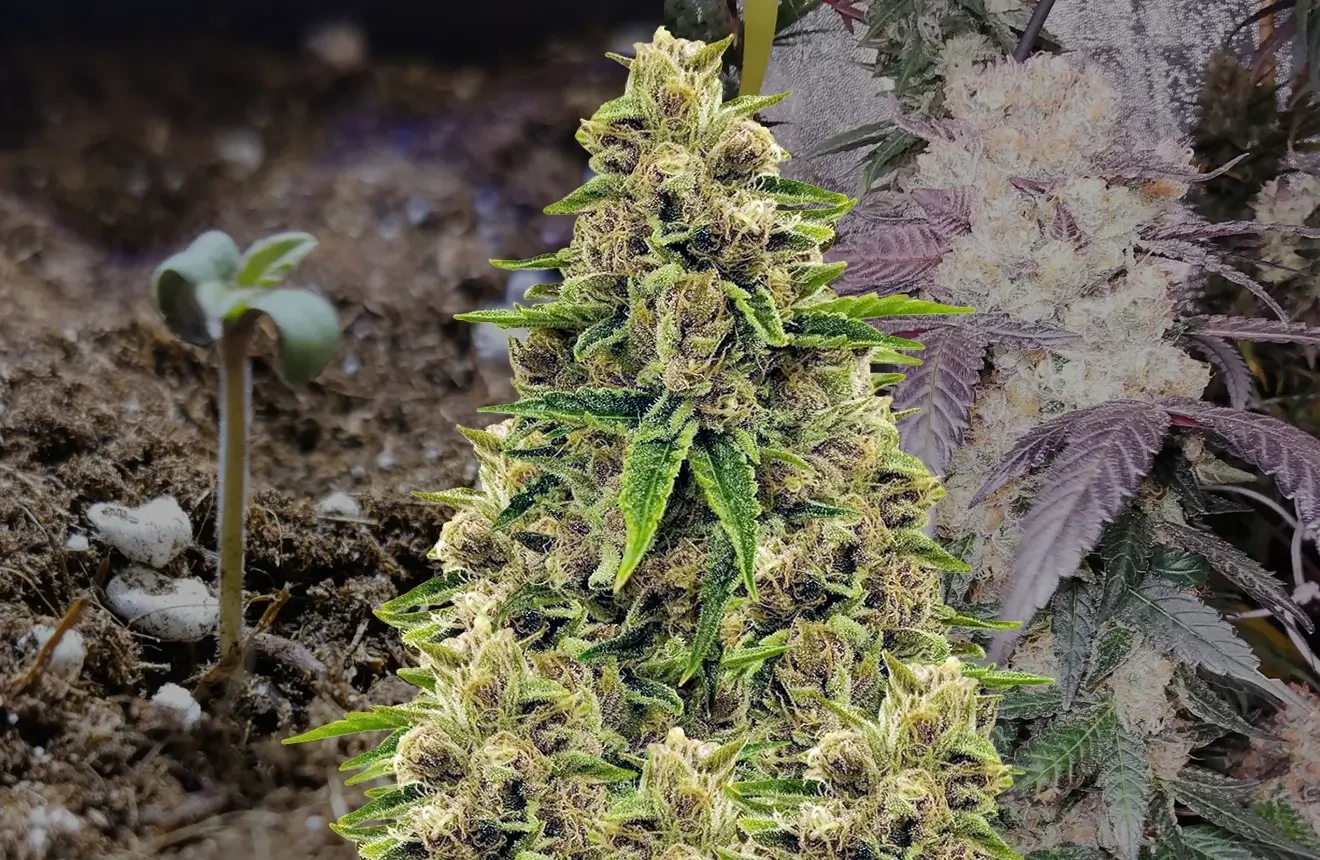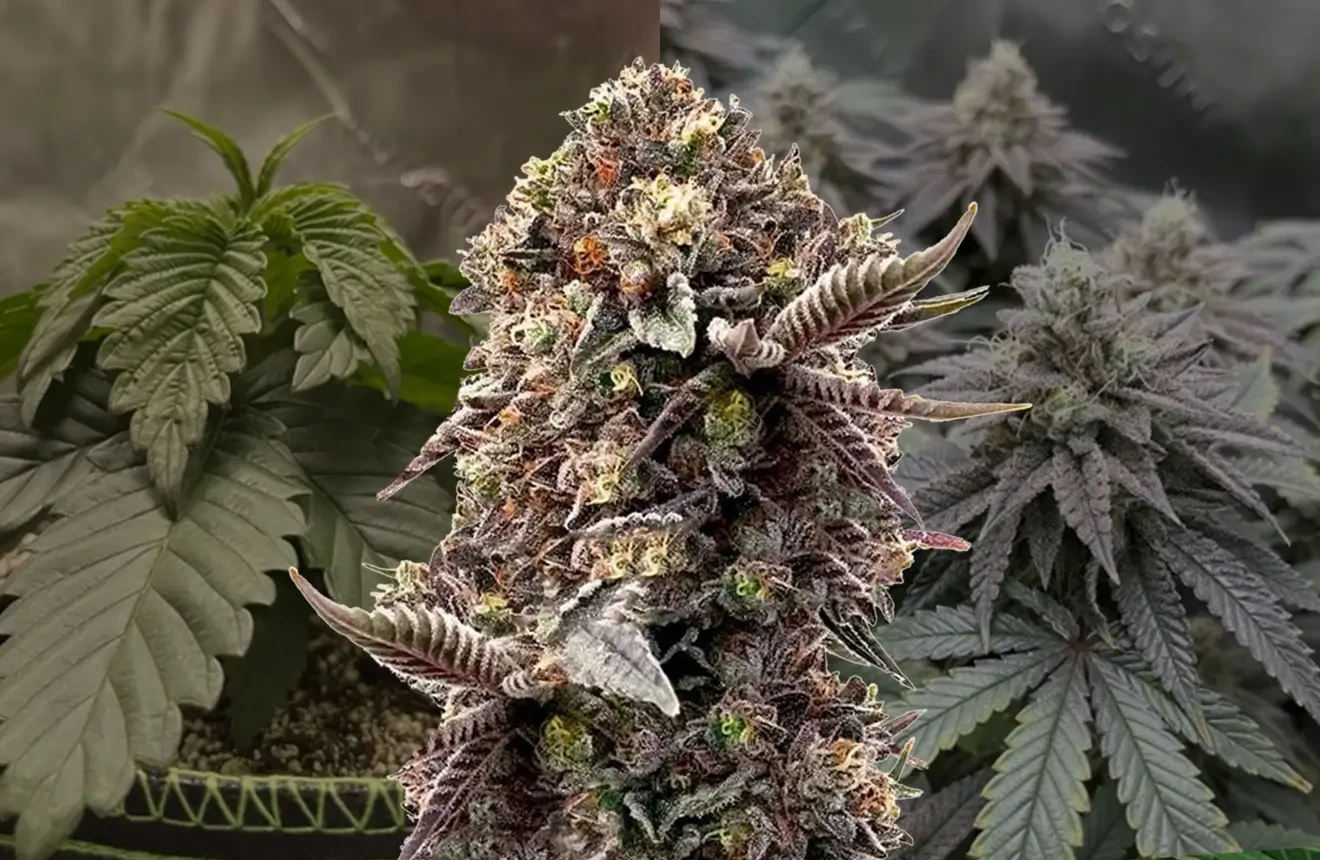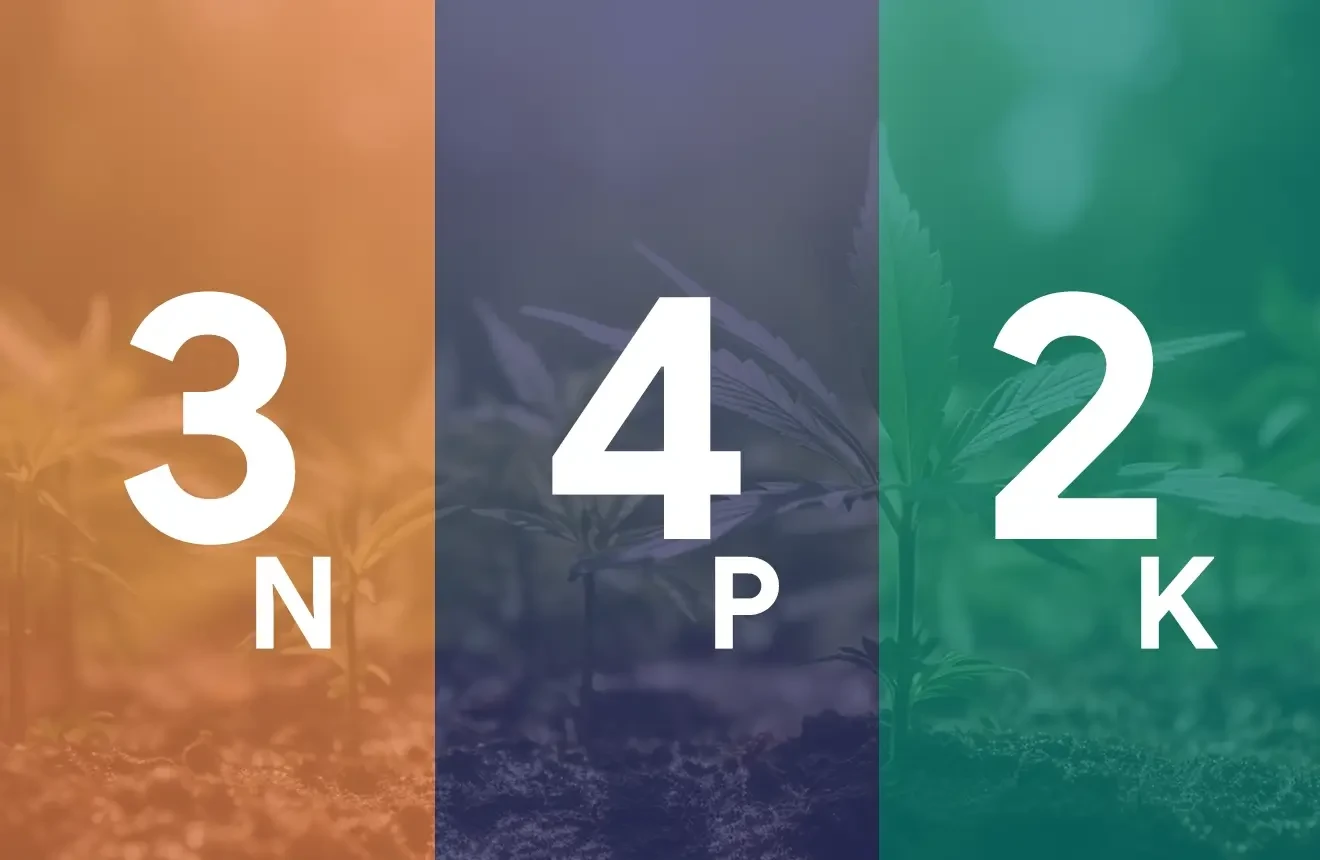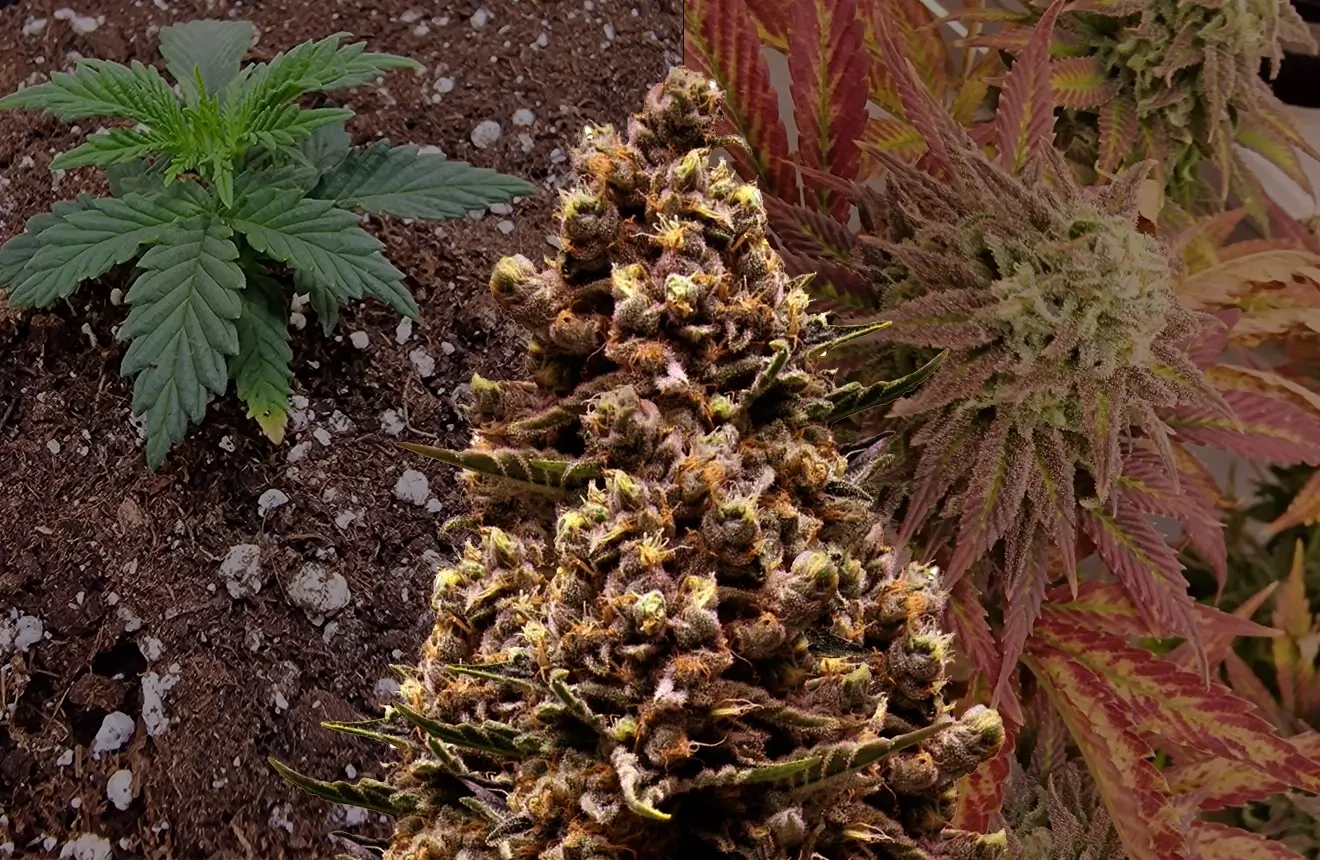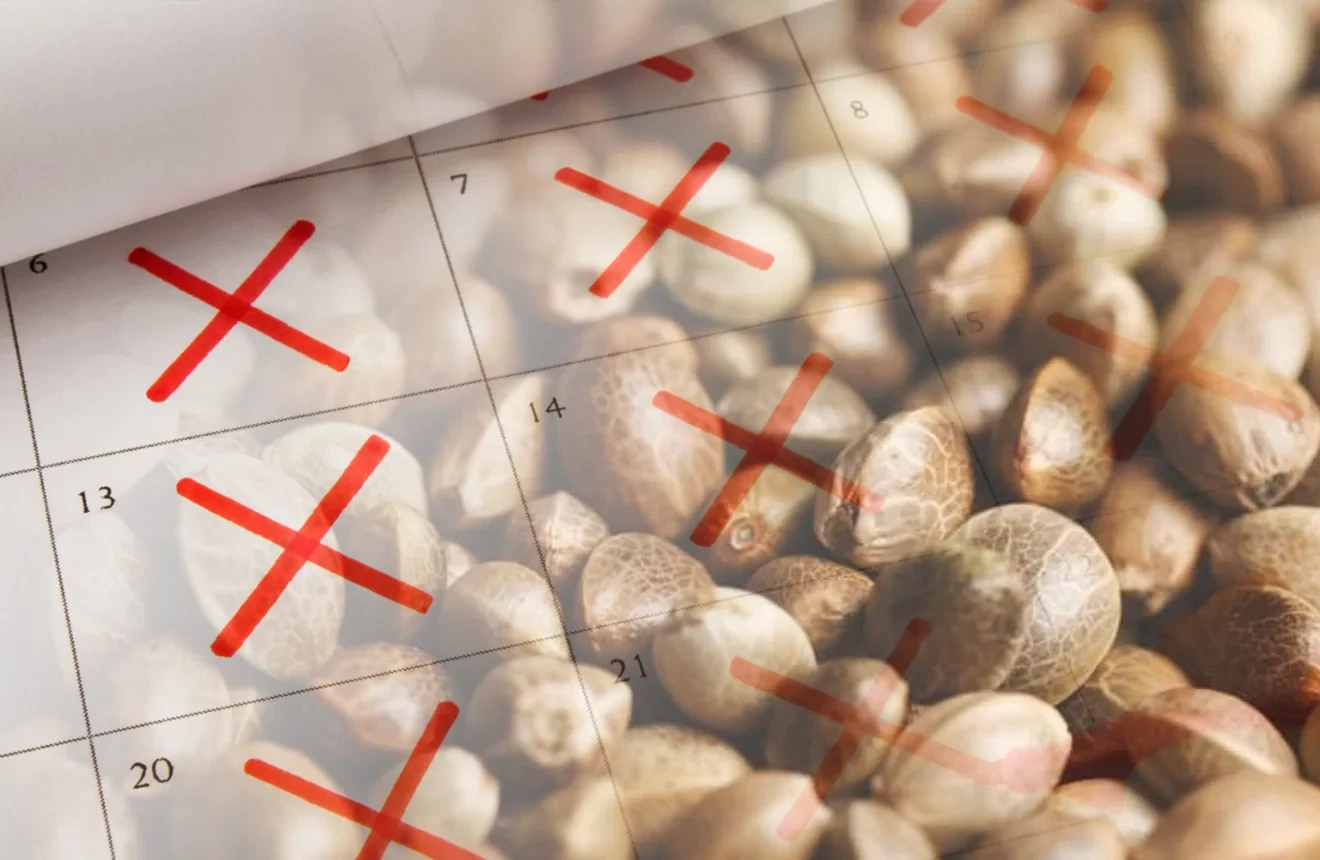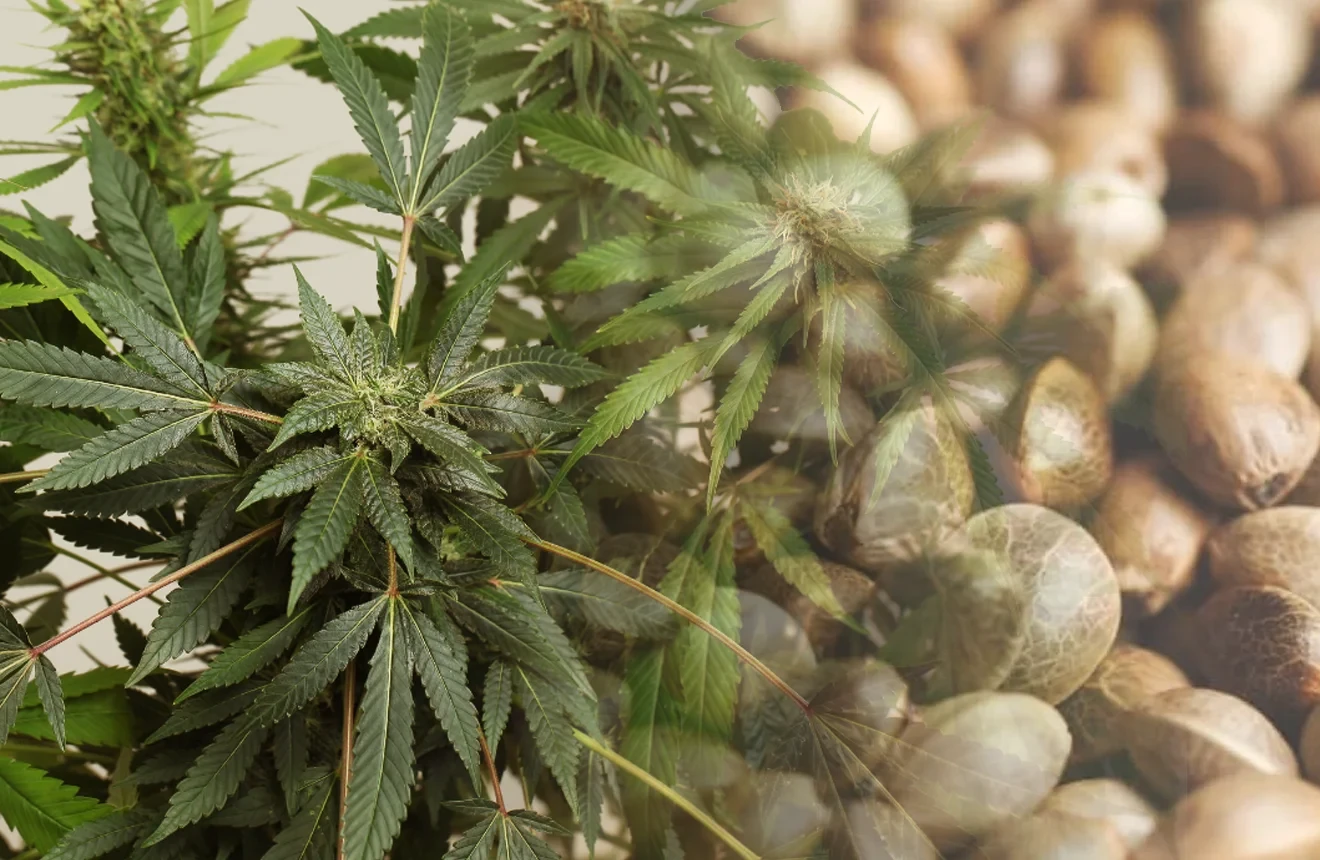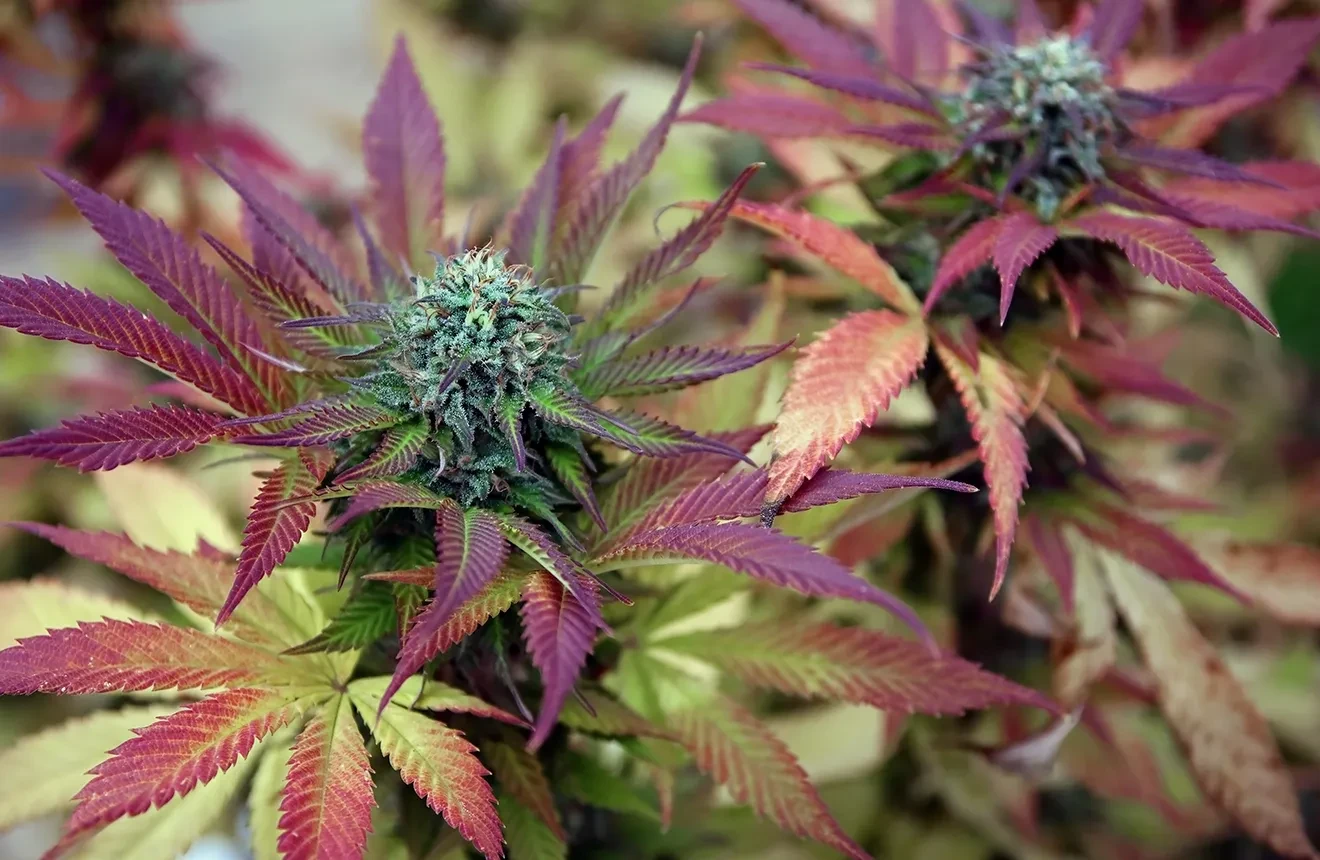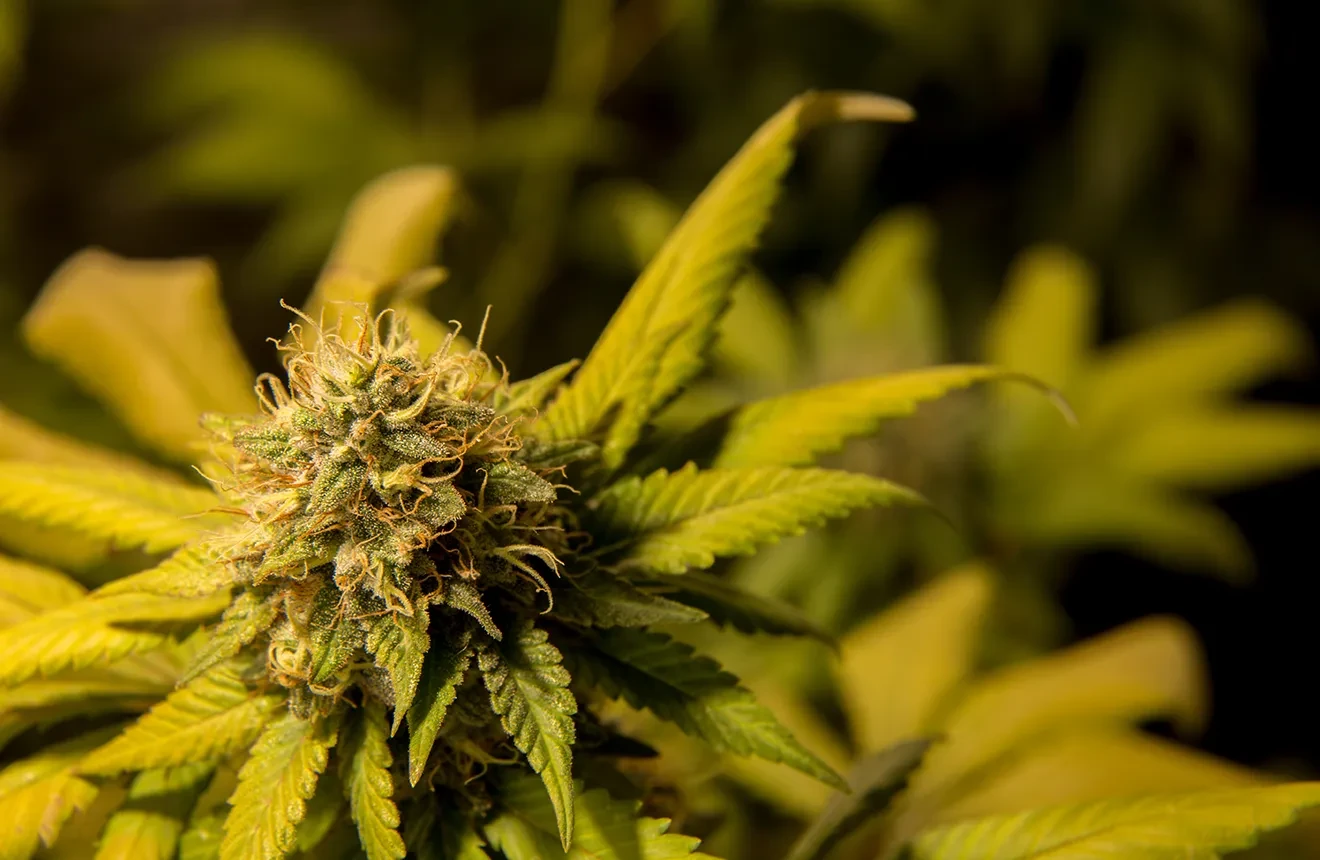Choosing a pot size can greatly affect your autoflower strain's yield potential. Go too small, and you risk stunting the crop; go too large, and the soil may dry out. Here we look at how to pick the perfect autoflower pot size for your setup indoors and outdoors.
We’ve included some of our top tips on drainage and container types as well to help you get off to a racing start.
What size pot for autoflower seeds?
Once you've received your cannabis seeds and have got to work germinating them, you'll need to think about potting your autoflower plant. The first thing to know is that pots come in all shapes, sizes, styles, and materials.
Whichever pot you choose depends on your strain's ideal height and the restrictions of your growing setup/space. If you're opting for an autoflower SOG setup with many plants in a tightly-knit space, smaller pots are perfect.
For grander operations like Scrogging your autoflowers, where you encourage your plant to expand and grow, you'll need a much larger pot.
In general terms, the larger the pot, the more space available for future growth. If you want to grow a tiny plant in a discreet cupboard or corner, you’ll need a smaller pot to encourage compact growth.
What’s more, if you’re potting your plant outdoors, you’ll require a larger pot than indoors. Another quick note here is that while re-potting a plant into a larger pot as it grows is fine, autoflowers benefit from starting in the pot you want them to finish in.
That’s because autoflower weed seeds are quick growing and flower on their own, leaving less room for error when adjusting a plant to a new soil environment.
Best pot size for autoflower plants
Autoflowers are slightly more complicated than photoperiod female seeds when it comes to choosing a pot because they grow rapidly without relying on light conditions.
You need to keep in mind not only how long it takes for your plant to grow, which is usually within three months, but also how big it may grow. Luckily, you’ll find all this information on each respective WeedSeedsExpress seed page.
Indoor grow
Simply put, very small indoor autoflower plants can be grown in pots of between 6.5 to 9.5 liters (or 1.75 to 2.5 gallons).
Choose this autoflower pot size for plants projected to grow just 40 or 50 cm (15.7 or 19.7 inches) in height or for compact SOG setups. Larger indoor setups for plants over 50 cm do well in up to 11.3 liter (or 3 gallons) pots.
Outdoor grow
Outdoor growers can expect taller cannabis plants and so require bigger pots. Opt for anything between 10 and 15 liters (2.65 to 4 gallons) with an outdoor plant, depending on the height.
While larger pots encourage greater growth, there is a shorter growing period on autoflower strains – so don’t waste your money on pots bigger than 15 liters.
What should a pot for autoflowers comply with?
1. Drainage
Drainage is one of the most important aspects of maintaining soil quality and affecting cannabis growth. It’s especially important for short-growing autoflower strains, as it promotes the exchange of air through the plant’s roots.
This allows the growing medium to dry properly, aiding the growth rate of the plant itself. Plastic containers are among the most popular pots on the market. They often do not contain drainage holes and therefore need a little tweaking to work well.
You can drill holes and/or add clay balls to the bottom of the pot to allow the water to drain slowly. Without proper draining, your plant can become waterlogged, reducing the amount of oxygen absorbed by the roots and stunting its growth.
The tell-tale signs of poor drainage are brown, wilting leaves. Some pots work better at drainage than others, as you’ll see below, so try to opt for one of those for the best success.
2. Dark color
We often want our plants to look nice. Before you settle on a color, know that it can make a difference to your plant’s actual growth. Darker-colored pots are better at absorbing light and retaining heat for the soil.
This is a must if you’re planting in cooler temperate conditions or are keeping your plant in a greenhouse or windowsill. If you’re growing in a very warm climate, this won’t be an issue and can even over-stress your plant’s roots.
3. The pot should be clean
It may go without saying, but your pot should always be clean when potting. If you’re using an old pot, residue from its previous inhabitants, such as disease-carrying pathogens like mold, can still be present.
If you plant your new seeds in these non-sterilized containers, they may get infected and possibly die young. As autoflowers grow so quickly, they have less time to recover, which can stunt growth and diminish yields.
Luckily, it’s very easy to get your pot in good shape. Take some kitchen sponges and a wire/mesh brush to get started. First, clean with dish soap, then sterilize with bleach or vinegar solution (the organic method) before rinsing and drying for use.
4. Enough space for optimal development
Giving your cannabis plant enough space is crucial for increasing your plant’s potential yields. Without the proper sized pot, you’re limiting your cannabis and preventing her from reaching her resinous potential.
It’s always best to err on the larger side of your plant’s prospective growth, as long as you have the space.
This gives it plenty of soil area to dig deep and flourish. The deeper your plant’s roots can develop, the bigger your cannabis plant will get. Too much space, however, will be a waste of nutrients and water.
Best type of pots for autoflowers
While you can’t go too wrong with a typical plastic pot as long as it has basic draining holes, not all pots are created equal. The following three pots are among the best pots you can pick up due to their improved aeration and drainage. Whichever one you pick is entirely up to you, we are just here to give you options.
You can even experiment with multiple pots side-by-side to see which gets the best results. It all comes down to how well your plant's roots are treated. You want to keep your roots hydrated, nourished, and healthy.
Fabric containers
Fabric pots are among the best options out there as they allow roots to breathe, boosting growth and promoting higher yields. With fabric pots, your plants are more likely to develop secondary roots to absorb nutrients.
Unlike root-bound plastic plant pots, fabric pots prevent roots from circling when they reach the edge of their container. Instead, it promotes the air pruning of roots and allows them to breathe. They are also vastly more environmentally friendly than their plastic counterparts.
They are more expensive than regular plastic pots, but the pay-off with yields and plant quality is often well worth it. You can also buy fabric pots in a wide range of custom sizes with special features like air layers and handles.
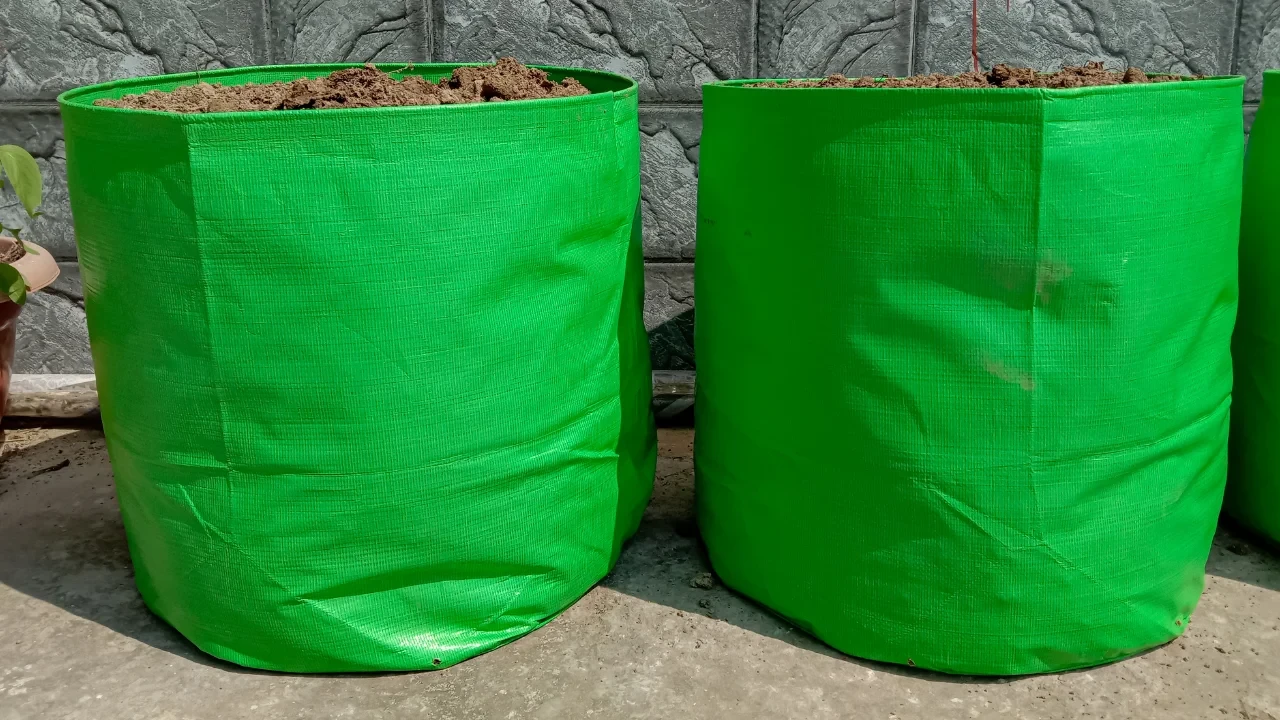
Terracotta pots
Terracotta and clay pots are porous, allowing air and water to move through their walls. This means that your plant's under-soil is far more breathable than with a solid plastic container. Traditional and simple in design, they're tried and tested methods of promoting healthy cannabis growth.
Many growers opt for these traditional pots because they naturally soak up and store excess moisture, which helps to cool the plant in summer and provides a slow release of nutrients.
Standard terracotta flower pots with holes underneath for drainage also come with a matching saucer, which you can conveniently use to catch runoff water. Another side benefit of terracotta planters is their weight.
They're heavy, solid, and less prone to being knocked about. All of these qualities can help you achieve greater yields than a basic plastic container.
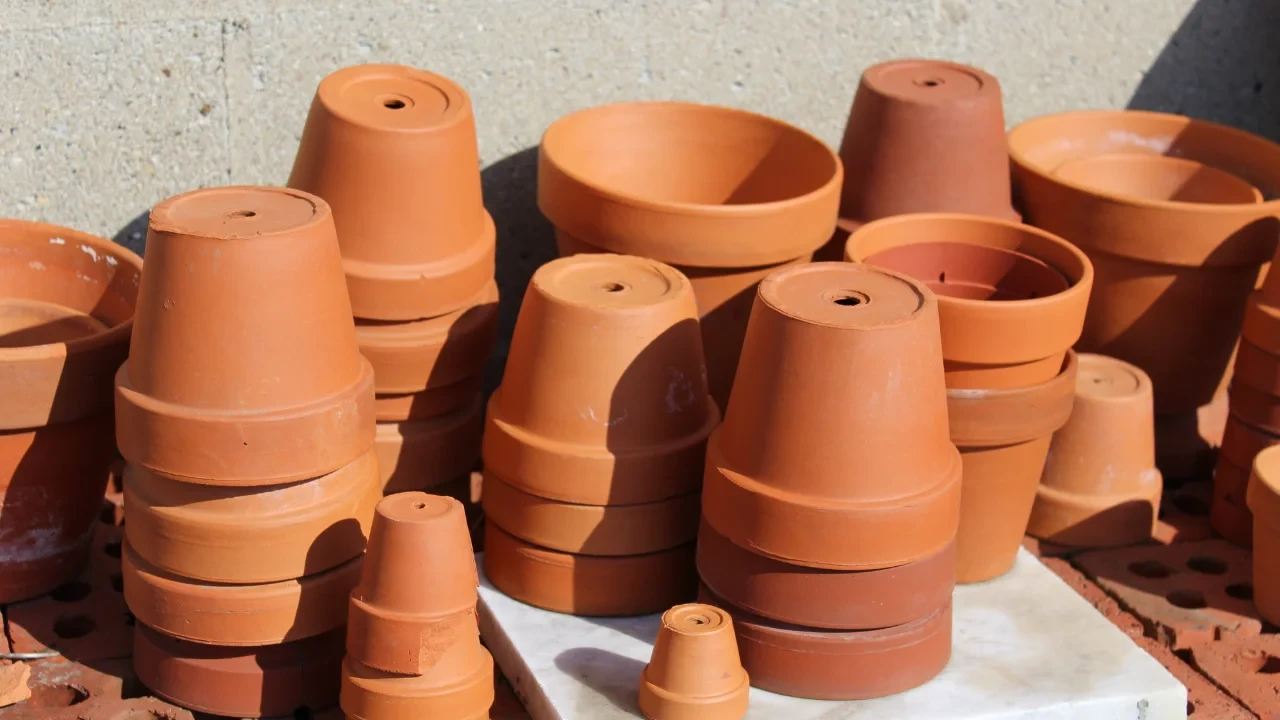
Air Pots
Air pots offer similar benefits to fabric pots, promoting the circulation of air and oxygen from all directions under the soil. They are essentially smart plastic pots with numerous openings crafted into their sides. They need watering more often than plastic pots, as the water drains far easier.
The main advantage here is that your roots can be automatically pruned by the air, promoting healthy growth, just like fabric pots. Unlike fabric pots, however, these are weighty and less prone to being spilled.
Many models do not come with a saucer, so be sure to invest in one to catch the water as it drains.
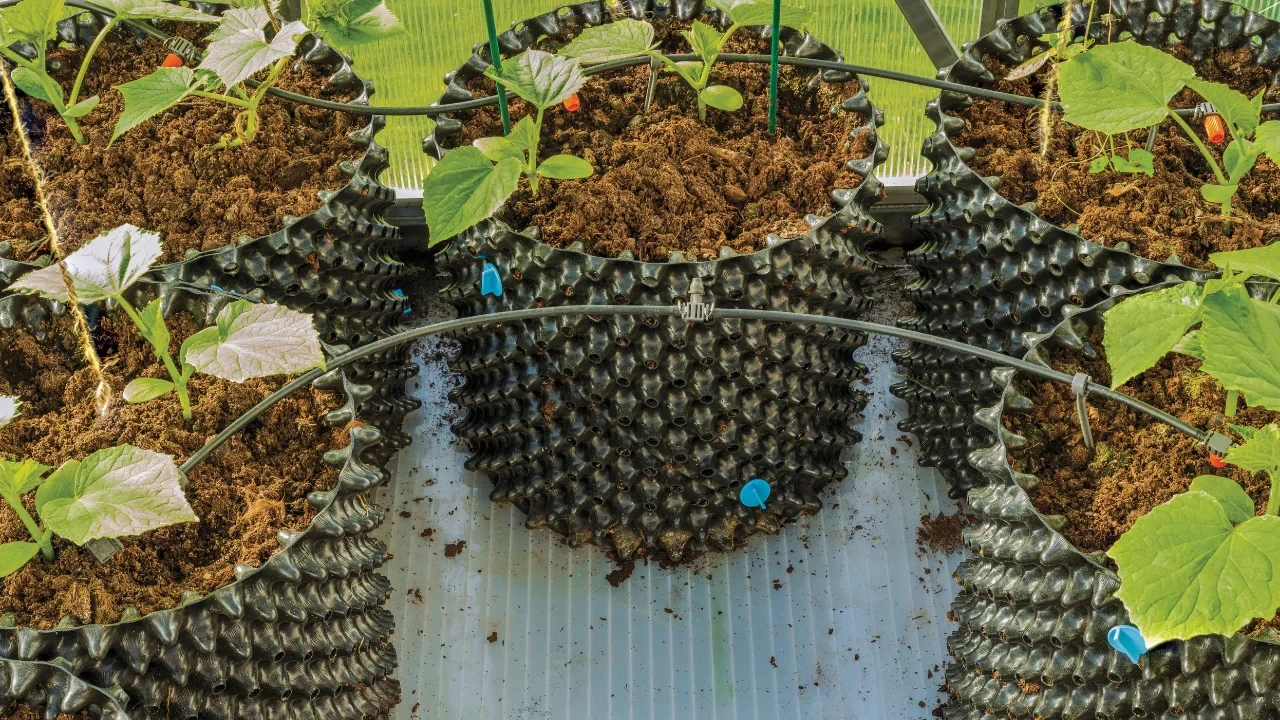
What have we learned?
There's no such thing as the 'perfect' pot. Choosing the right container for your autoflower plant requires some planning, but it's crucial for successful growth. Consider the potential height of your plant when growing indoors or outdoors and choose your pot size accordingly.
Don't forget about important factors like proper drainage, the color of the pot, and ensuring there's enough space for your autoflower cannabis plant.
